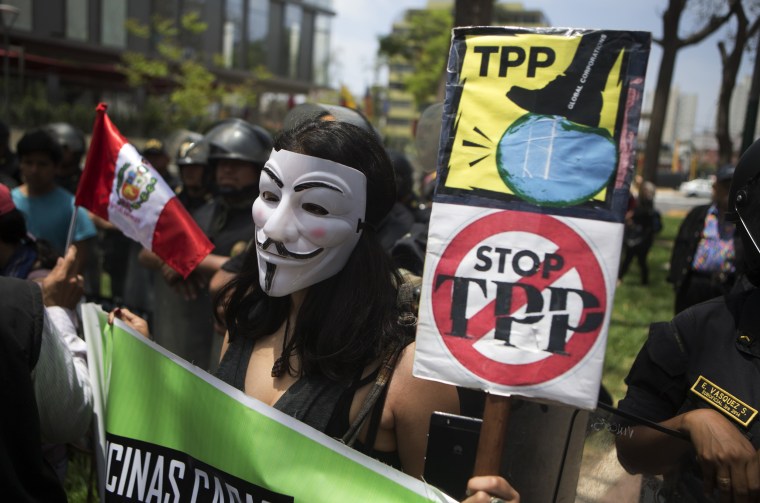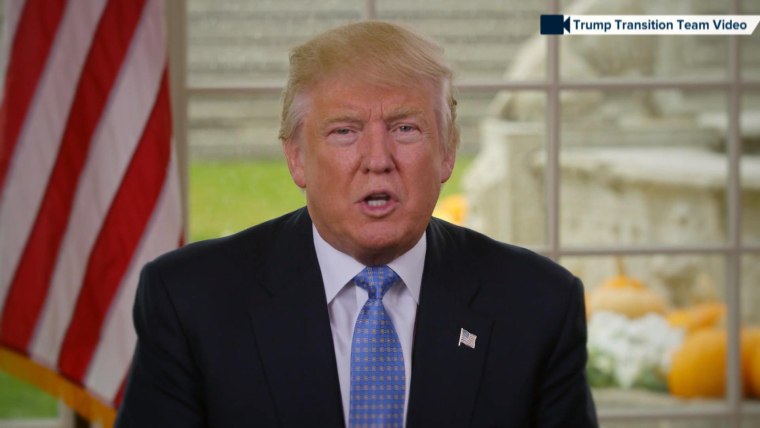President-elect Donald Trump's announcement that the United States would withdraw from the Trans-Pacific Partnership dealt a death blow to a trade deal that was already highly unlikely to pass Congress.
Though the 12-nation agreement is strongly supported by President Barack Obama, it is opposed not only by Trump and many Republicans, but also by progressive Democrats like Bernie Sanders and Elizabeth Warren. As a presidential contender, Democratic nominee Hillary Clinton reversed her support for the deal and said she would oppose it if elected.
Related: Trump's Plans to Ditch TPP Leaves Trade Pact 'Meaningless'
Obama and his team had hoped to push through the deal in his final two months in office if Clinton won. But Trump's victory has been interpreted by congressional leaders as another sign of wariness from the public about trade agreements, so they are not considering a TPP vote.
Here are both sides to the deal, and a look at the bigger challenge ahead for Trump's anti-international trade agenda.
Why Did President Obama Push So Strongly for the TPP?
The Obama administration and many in the business community view the deal as both an economic opportunity and in some ways a foreign policy one.
In terms of foreign policy, Obama and his team saw the deal as part of a broader strategy to assert American values and interests both in Asia and around the world in opposition to China’s growing power and influence.
China is not included in the TPP. Instead, the deal comprises a diverse group of nations (Australia, Brunei, Canada, Chile, Japan, Malaysia, Mexico, New Zealand, Peru, Singapore and Vietnam) that the U.S. wanted to build stronger economic ties with.
China, however, is trying to create its own multi-country trade agreement, called the Regional Comprehensive Economic Partnership (RCEP). The U.S. is not included in that agreement.

Obama argued that by helping write the trade agreement that set policy for a wide group of nations, the United States could push for higher labor and environmental standards abroad. This would benefit American workers, he argued, because it would mean that companies in the TPP nations would abide by workplace standards that more closely resembled those in the U.S. With more equitable workplace standards, there would be fewer incentives for American companies to treat their workers poorly or outsource their jobs abroad.
The administration argued that the more direct benefit for Americans would be expanded and simplified trade with many of these nations. Obama’s team estimated the TPP would lift 18,000 tariffs imposed on U.S. products sold abroad. This would lower the price of American-made products abroad and therefore potentially increase their sales, which could create jobs back home.
Obama did not state this so bluntly, but his argument is essentially that the trends that are causing American jobs to disappear — more international trade, technology, globalization, and automation — are not going away, and trade agreements like TPP can help the U.S. thrive in the new economy.
Why Trump and Others Opposed It
Some of TPP’s critics say that the labor and environmental standards in the agreement simply aren’t strong enough. For example, some argued that the deal will allow some of these nations to continue opposing unionization.
But the broader critique of the agreement, one that Sanders and Trump articulated, is less about the details of TPP and more about the economic trends. Their stance is that the U.S. should not simply accept that globalization, trade and technology will continue apace, lowering wages or eliminating jobs for some workers while increasing them for others.
While Obama wants to manage globalization, Trump and Sanders argue that the U.S. should stop or at least try to pause international trade and greater economic integration with the rest of the world, until the U.S. can take affirmative steps to improve the economic conditions of working-class Americans.
Why NAFTA Poses a Larger Challenge Than TPP
The TPP agreement might be going away, but Trump’s main target during the campaign was the North American Free Trade Act (NAFTA), which has been in place since the 1990s. He won in states where NAFTA had the biggest negative impact on manufacturing jobs — like Michigan, Ohio and Pennsylvania — in large part by promising to renegotiate the trade deal.
A president can renegotiate or withdraw from a trade agreement, without Congress. But Canada and Mexico will have their own priorities in such a negotiation, and American business leaders are likely to oppose Trump if they view the agreement as endangering American companies or jobs.
But for Trump, stopping the TPP is a first and simple step in his broader anti-international trade agenda. Changing the deeply-entrenched NAFTA presents the president-elect with a much bigger challenge.
